Facelift
Facelift Procedure From Dr. Moulton-Barrett
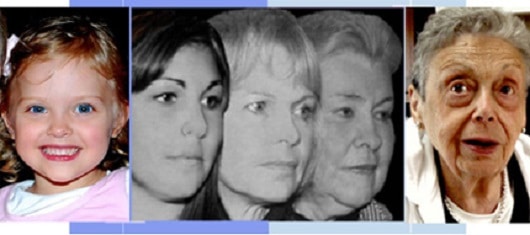
The youthful face is essentially heart shaped and suspended on a pretzel-thin neck. In contrast, the aging face becomes rectangular and the aging neck becomes bulky and folded. Why is this? It is
To meet with Dr. Rex Moulton-Barrett and find out how a facelift can improve your appearance, request a consultation using our online form.
What is involved in a facelift?
A facelift, otherwise known as a rhytidectomy is used to restore a more youthful appearance of the face and neck. Based on the above changes noted to the aging face, it follows that are 5 components to a successful rhytidectomy: removal of excess and lax facial skin, tightening of underlying muscular support, release of ligaments ( which create hollows in the presence of fallen soft tissues ), suspension the facial fatty tissues and removal of neck fat with tightening and re-suspension of the platysma musculature. The results may be subtle or dramatic, depending on your appearance prior to the surgery and your desired outcome.
The duration of a facelift is between three to six hours of anesthesia, depending on the extent of surgery: with or without brow lift, eyelid surgery or additional procedures. Several types of facelift surgery procedures are available, including the standard facelift, deep plane, lower facelift, mid facelift, mini facelift, and thread lift. These procedures are described below.
In-Office Next Lift
I have named this technique ‘Next Lift’ to describe a more long lasting type of short scar, miniface lift with a small under the chin incision which combines removal of the fat under the jaw, extended platysma suturing in the midline of the neck, lateral neck suture tightening of the neck with a long lasting neck – hammock – sling, tightening of the facial musculature and resuspension of the cheek fat, to recreate the youthful heart shaped face, with softened cheek folds and with jowl correction. This technique combines the short recovery period, short duration of an in office and therefore less expensive as well as early back to work considerations of a life style type lift.”
For better or worse, the advent of medicare in 1965, led to the death of many in office procedures. In fact, many insurance carriers from that point onwards demanded surgery be performed in an expensive hospital and operating room environment.
Recent economic events, specifically the banking crash related to sub-prime lending, the loss of retirement savings and the California specific 12% unemployment rate with 25% reduction from full the part time employment in the existing work force has led to a rethink in the way that cosmetic surgery should be performed.
Without a question the surgical facility and anesthesia fees have increased by over 20% in the last 3 years despite the economic downturn. Yet, fellow baby boomers want surgery in our look – good – feel – good generation. So in office self – pay procedures are staging a come back.
The question is, can an in office face lift be performed safely and comfortably under local anesthesia and without intravenous anesthesia? And the answer is absolutely yes! Why is this, simply stated, a facelift is a skin operation, in which the thin underlying facial musculature support and facial fat a made readily asensate during the procedure using a dilute subcutaneous anesthetic solution, called tumescent solution. The same anesthesia technique has been previously championed for in office liposuction and laser varicose veinous vein ablation.
In my office, the patients are operated on in the semi – sitting position, looking out the window: across the San Francisco Bay, listening to their favorite music and we make conversation, mean while the face is being operated on, the neck is defatted, the neck muscles corseted, the cheeks suspended, the facial muscle tightened and the excess skin removed through a small ‘S’ shaped, so – called ‘short scar technique’. What is remarkable, is how much happier patients feel and how well they look on their first post operative visit, 2 days after surgery, as compared to patients who have had 4 to 5 hours of general anesthesia. Not to mention, the cost for general anesthesia in a surgical facility more than doubled the overall cost for surgery.
I believe the modern and safe in office face lift supports the concept of “financial necessity is the mother of safe plastic surgical re – invention.
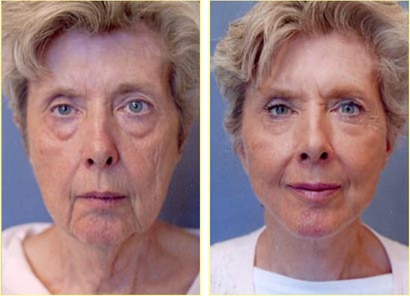
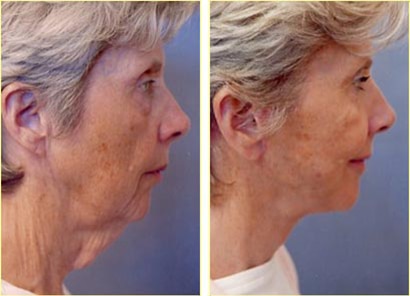
Standard Facelift
This is a term that is interchangeable with
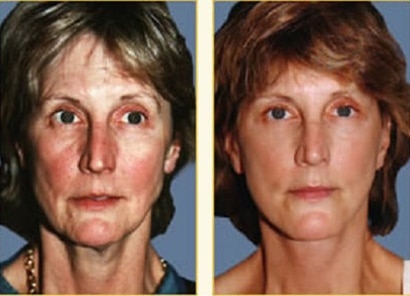
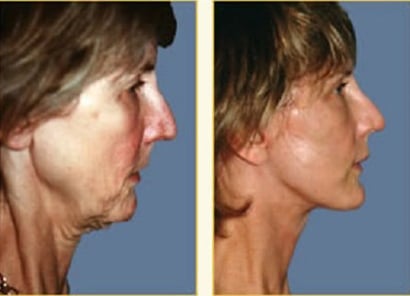
Deep Plane Facelift
The deep-plane facelift is an advancement of the traditional SMAS facelift in the quest of improved mid-face rejuvenation and a more natural appearance. As the name implies, a deeper plane of surgical dissection is entered within the mid-face and lower face region before the muscles are lifted. The incision line is similar to the traditional facelift. During a deep plane facelift, the SMAS layer is separated off the underlying deeper structures (i.e. chewing muscles, facial nerve etc.). Advocates of this procedure point to a “natural” plane of dissection with decreased blood vessels and an improved rejuvenation of the droopy mid-face. Plastic surgeons using the traditional facelift technique are sometimes doubtful of a significant outcome advantage and point out higher technical intricacy and an increased risk for nerve injury with the deep plane facelift procedure.
Lower Facelift
A lower facelift eliminates jowls, targets lax skin on the neck and jaw line, addresses deep wrinkles, and raises the corners of the mouth. There are two types of lower facelifts: the S lift and the SMAS facelift. The S lift is named after the small, S-shaped incision the surgeon makes in front of the patient’s ear. Working through this incision, the surgeon will tighten the underlying structures of the lower face, smooth down the skin, and trim the excess skin. This procedure is generally ideal for patients 30-50 years old and can be performed under local anesthesia.
The SMAS facelift is named after the SMAS layer of the face: the underlying layer of muscle and connective and fatty tissue, which are tightened during the procedure along with the skin. The SMAS facelift requires a slightly longer incision that begins in the temples and extends down to loop around the ear. The surgeon then carefully separates the skin from the tissue below. Excess fat is removed and facial muscles are tightened and restored to youthful positions. The skin is then redraped, and the amount of excess skin to be removed is determined by the surgeon. The excess skin is then removed, and the skin incisions are closed with sutures and staples.
Mid Facelift
The mid facelift targets the area around the nose, eyes, and corners of the mouth. It is particularly effective for patients seeking cheek elevation when the neck and areas beneath the chin do not require lifting. There are two mid facelift techniques that a surgeon can use. Regardless of which technique is used, the mid facelift is able to correct under-eye bags, hollowness in the upper cheeks, and prominent nasal folds.
In the traditional mid facelift, best suited for patients deeding their tissues lifted upward, the surgeon makes an incision hidden in the lower lash line through which he can remove fat, adjust the muscle tissues, and tighten the skin. The second technique is performed through endoscopic incisions placed at the temples, behind the hairline. Through these incisions, the surgeon adjusts the fat and muscle tissue, pulling up the middle of the face to smooth and tighten the skin. Because the mid facelift is more focused and less invasive than a standard facelift, patients experience quicker results with less bruising and swelling. The mid-face lift is commonly performed using endoscopes through incisions within the temporal hairline and sometimes within the mouth or from within the lower eyelids.
Various technical aspects are common topics of discussion during scientific facial cosmetic surgery conferences demonstrating, that the last word of the best approach to the mid-face has not been spoken. As a side note, some facial plastic surgeons believe that a similar improvement can be obtained by using fat grafting (“
Temporal Facelift
There is not a universally acknowledged definition for
Sub-Periosteal Lift
After the advanced technique of the deep
Mini Facelift, ‘S’ Facelift & Minimal Incision Facelift: MIF
The mini facelift is sometimes known as the weekend facelift because of how quickly it can be performed and how short the recovery period is. The mini facelift is intended for younger patients who wish to reduce sagging and droopiness only in specifically targeted areas, specifically the midface, ie. nasolabial folds, jowls and for minor neck folds. Using a smaller incision ‘S’ shaped incision and with or without endoscopic facelift technology, the surgeon lifts, repositions, and suspends the tissues. As a result, the mini facelift is one of the least invasive procedures in facial surgery.
There is certainly not only one mini facelift technique. In general, a small incision is placed to gain access to particular areas of concern. Although certainly attractive to people looking for a quick and easy fix, commonly the results have been moderate at best and often only short lived. But as with any cosmetic procedure, the final result depends primarily on the patient’s particular condition and the surgeon’s expertise. There certainly are also positive reports from people who underwent a mini facelift. Best candidates for mini facelifts are usually the young with minimal sagging who just require a small touch up.
The name “short-scar facelift” does not give much information about the procedure itself. It solely implies that the incision lines and therefore the resulting scar may be shorter than in other procedures. S Lift
A S-Lift is a modified Mini facelift where the lifting sutures are placed in a specific S-shaped pattern. The S-lift procedure was introduced in the United States by Dr. Ziya Saylan from Germany. It is not clear if there are advantages to this particular way of suture placement.
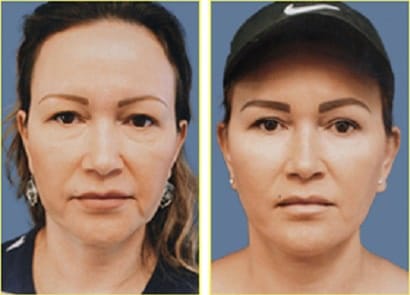
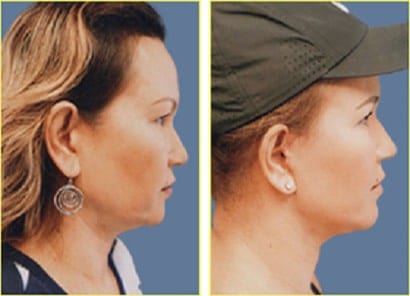
Neck Lift
A
Platysmaplasty & Liposuction of the Neck
Platysmaplasty literally means “plastic surgery of the platysma”. The platysma is the muscle located beneath the skin within the neck region. As aging progresses, the front edges of this muscle produce unsightly neck “chords” due to its decreased elasticity. During a
Liposuction of the neck is sometimes performed as a sole procedure. Here it is limited by the patient’s skin elasticity to accommodate the new neck shape. More commonly, it is almost routinely performed with facelift surgery. Although one of the small steps during a facelift, it is usually very important for an optimal outcome. A tiny opening is placed underneath the chin to allow access for a small liposuction cannula. Using a suction apparatus, fat is carefully removed from the neck to allow optimal definition of the chin and neck angle. The key is to remove this fat evenly for a smooth neck appearance and not to remove too much to create an unnatural appearance. Generally, only a little fat removal is necessary to create the desired result.
Thread Facelift
A thread facelift is a convenient, less invasive alternative to traditional facelifts, designed for people experiencing early signs of aging, such as minor facial sagging. The best candidates for a thread facelift are in their 30s to 60s and have relatively good skin tone. Most are beginning to experience sagging in their face or neck but do not have excessively loose skin or drooping facial areas that might require more rigorous facelift surgery. This facelift procedure can be performed in just one or two hours, often without anesthesia. During a thread facelift, the cosmetic surgeon inserts thin threads into the face through tiny incisions made in the targeted area. These threads attach to the skin tissue and are then pulled back to lift and smooth the face. Almost immediately, treated areas will be raised slightly, eliminating sagging and giving patients a rejuvenated appearance. Because patients usually remain fully conscious during the procedure, they can approve the look of their thread lift while the surgeon works. Once the threads are knotted, they become hidden within the skin itself, and any scarring that results will be virtually invisible. Various branded and self-made sutures are available (i.e. Contour, APTOS, Silhouette etc.). These sutures differ in how they hook into the facial tissues (barbed fish-hook like teeth, knots etc.). The longevity of these sutures is not known. Improvements may request re-tightening procedures after 4 to 9 months.

Lifestyle Lift
The so-called “Lifestyle Lift” is a proprietary term used by a consortium of
Recovery, Precautions and Risks
It is important to realize that the amount of time it takes to recover from Facelift surgery varies greatly between individuals and type of facelift. Most patients experience very little pain after surgery. Some degree of swelling and bruising is unavoidable, and you may be instructed to use cold compresses and keep our head elevated to keep swelling to a minimum. Most swelling is usually noted in the first 24 to 48 hours, and most bruising resolves within 2 weeks. In some cases, a drainage tube may have been inserted during surgery. This will be removed on the first or second day after surgery. All sutures and staples are usually removed within five to 10 days following surgery. Surgeons generally recommend that patients avoid vigorous activity after surgery. Recovery usually takes two to three weeks, though many patients go back to work in two weeks. You may experience numbness to the face post-operatively, which usually resolves within several months.
Fortunately, significant complications from facelifts are infrequent. However, anyone considering surgery should be aware of both the benefits and risks. The most common complication during a facelift is bleeding that may require return to the operating room. Blood pressure control before, during and after surgery is extremely important. Avoidance of non-steroidal agents and vitamin E is also important in preventing bleeding and products such as Arnica may help reduce bruising and swelling after surgery. Less common, but potentially serious, complications may include damage to the facial nerves, necrosis of the skin flaps, hematoma formation, reaction to anesthesia, or infection. For these reasons facelift should be avoided in persons who smoke, consume
Facelift incisions are usually quite inconspicuous; however, this is not entirely predictable due to individual variations in the potential for scarring which is genetic in nature. As a rule, patients who tan easily or are darker in pigmentation tend to produce more scar. One way to reduce scarring is to maintain strict scar hygiene. This means a
To find out more about available treatments and procedures, request a consultation with Dr. Moulton-Barrett at one of his Bay Area offices. Board certified plastic surgeon Rex Moulton-Barrett, M.D., offers advanced care and procedures for Bay Area residents. He has offices in Alameda and Brentwood, CA.
COSMETIC PROCEDURES
Our Clinics
Alameda Clinic
2070 Clinton Ave
Fourth Floor
Alameda, CA 94501
Phone (510) 864-1800
Brentwood Clinic
1280 Central Blvd
Suite J-5
Brentwood, CA 94513
Phone (925) 240-8775
ALAMEDA OFFICE
BRENTWOOD OFFICE
Alameda Location:
2070 Clinton Ave, Alameda, CA 94501
510-864-1800
Brentwood Location

